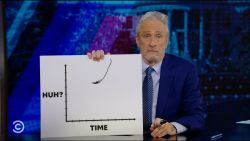Inflation in Europe has fallen to its slowest pace in more than a year, though stark signs of persistent underlying pressure on prices will complicate policymakers’ next move on borrowing costs.
Prices in the 20 countries that use the euro rose 6.9% this month compared with a year ago, the European Union’s statistics agency said Friday.
That’s a sharp decline from 8.5% in February and the lowest inflation rate since February 2022, when Russia launched its full-scale invasion of Ukraine, sending energy prices soaring. The pullback in inflation this month was driven by a 0.9% year-on-year fall in energy prices.
But the latest data includes evidence of lingering upward pressure on prices. The price of food, alcohol and tobacco climbed 15.4% year over year, up from 15% in February. And prices for services rose 5%, up from 4.8%.
More worryingly, core inflation — a measure that strips out volatile food and energy prices — ticked up to 5.7% in March from 5.6% in February, reaching a new record high.
That is likely to create a headache for policymakers at the European Central Bank, who have been hiking borrowing costs aggressively. They have had to balance the need to tame inflation with limiting stress to the economy. The recent turmoil in the banking sector has also underscored the dangers that rapid interest rate rises pose to some lenders and to the wider financial system.
Europe’s economic growth is also at risk from emerging efforts by banks to conserve cash following the failure of Silicon Valley Bank in the United States and the downfall of Credit Suisse, which could make it more expensive to take out loans.
Stubbornly high core inflation makes it harder for the ECB to judge whether it has done enough to rein in inflation.
“Descending headline inflation thanks to cooling energy prices will not be enough for the ECB to stop tightening, as policymakers are looking for clear signs of core inflation easing,” Riccardo Marcelli Fabiani of Oxford Economics said in a note to clients.

























